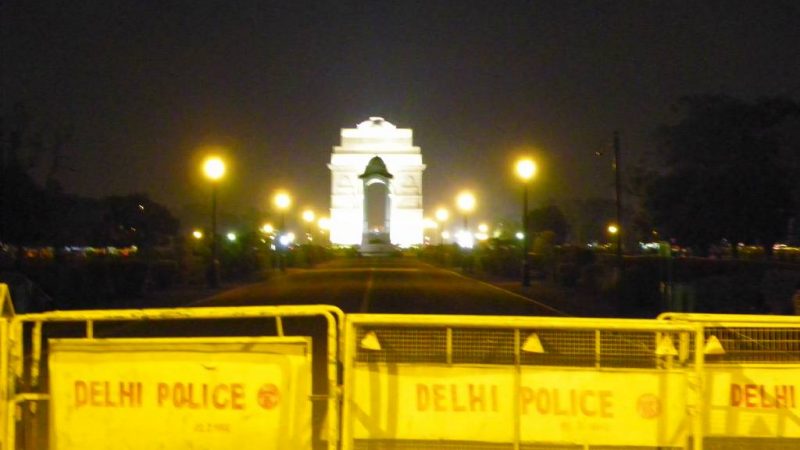 [1]
[1]Image by Rajesh Balouria from Pixabay. Used under a Pixabay License [2].
Check out Global Voices’ special coverage of the global impact of COVID-19 [3].
On March 24, Indian Prime Minister Narendra Modi ordered [4] the country to lockdown for three weeks. The emergency protocol shuts down public places and curbs transport facilities — leaving the policing of restrictions to state governments.
The announcement has triggered an exodus [5] of migrant workers hoping to flee cities for their rural homes after losing their jobs to the COVID-19 shutdowns. This mass movement of people is causing fears that contagion of the virus will be even harder to stymie.
From walking more than 200 km to get home to being sprayed with chemicals, here's how the 21-day lockdown has been for a major section of our population. https://t.co/p9bfq8NAXp [6]
— Youth Ki Awaaz (@YouthKiAwaaz) April 4, 2020 [7]
In the last three decades, India's economy has seen millions of people leave agriculture for the cities. The construction sector was one of the booming economic areas which employed close to 50 million workers. Many of them working outside of legally enforceable contracts at low daily or weekly wages. The sudden break in all forms of economic activity due to the lockdown has left these workers jobless, and some without access to food. Many of them thronged railway and bus stations to leave the city. But the suspension of public and private transport without adequate warning has left them without a way to get back home. It also puts them at an increased risk of contracting the infection.
When the entire city is in a lockdown, why not railways have a better crowd management, an information system, more personnel, some food & provisions for these over 1000 stranded workers. Here instead, a handful of police men were tasked to struggle without a strategy or masks pic.twitter.com/xETluYZTnd [8]
— Arun Janardhanan (@arunjei) March 22, 2020 [9]
Delhi: Migrant workers in very large numbers at Delhi's Anand Vihar bus terminal, to board buses to their respective home towns and villages. They have walked to the bus terminal on foot from different parts of the city. pic.twitter.com/IeToP3hX7H [10]
— ANI (@ANI) March 28, 2020 [11]
Due to the transportation shutdown, many migrant workers across the country started walking back to their hometowns.
देश में लॉकडाउन है,बस,ट्रेन,प्लेन सब बंद है इस लिए पैदल ही कई किलो मीटर अपने घर की और निकल पड़े है ये लोग तस्वीर है नागपुर- चंद्रपुर की रोड की – भयानक है ये pic.twitter.com/KnmhJX9mw5 [12]
— rounak kukde (@rounakview) March 27, 2020 [13]
There are also reports [14] of migrants dying from starvation, exhaustion and heart attacks.
Deaths due to lockdown in India. A thread:
— Kanika (@_kanikas_) March 29, 2020 [15]
Amidst this crisis, the Modi government announced a belated relief package [16] of a reported $23 billion, but it failed to mention the affected migrant workers. Meanwhile, social media has been awash with images of police brutality against people for violating an order by the Modi government issued [17] in response to television reports of the mass movement of migrants.
Punjab police style in India during Corona virus lockdown. Do you agree police should treat people this way? #PunjabPolice [18] #CoronavirusLockdown [19] #coronavirus [20] @PunjabPoliceInd [21] pic.twitter.com/uFs3MemicF [22]
— Surinder singh (@surinders86) March 24, 2020 [23]
LOCKDOWN CRACKDOWN
New video shows police in India beating people with sticks,slapping them ‘n forcing calisthenics for allegedly violating the newly-enacted nationwide lockdown as the nations tries to beat back the coronavirus pandemic through social distancing.#COVID2019 [24] pic.twitter.com/lcuWeLI9Yi [25]
— Anak Kolong™ (@AnakKolong___) March 25, 2020 [26]
This is shameful ,@budaunpolice [27] . Instead of offering water, some solace to these migrant workers returning home amid the #Lockdown21 [28] , your men are punishing them like this ? What is their fault if their factory owners are kicking them out ? @upcoprahul [29] please intervene ! pic.twitter.com/nyFZgQwtoD [30]
— Alok Pandey (@alok_pandey) March 26, 2020 [31]
Yet another outcome of an unplanned lockdown has been disruption to the food supply of poor and marginalised populations. While the government has guaranteed essential services to be exempt [32] from the lockdown, poorer sections of the population that depend on subsidised food rations have been left in the lurch — even in the capital [33].
FPS no. 7157/60 in Krishna Nagar (East Delhi) – No stock since 1 April.@CMODelhi [34] – How is this still happening despite your repeated assurances about provision of ration entitlements to the people? pic.twitter.com/ITk8bGBPRE [35]
— Right to Food, India (@rozi_roti) April 5, 2020 [36]
The human cost of the lockdown pic.twitter.com/Cgf4YuZb3w [38]
— Road Scholarz (@roadscholarz) April 5, 2020 [39]
As the deadline for the end of the current lockdown is less than a week away, authorities are planning for a phased resumption [40] of various transport services. The biggest challenge arguably remains the clusters of infections that have formed in densely populated poor areas in Mumbai's suburbs [41] and Nizamuddin [42] in Delhi. The World Health Organization has advised that maintaining social distance [43] is one of the most effective strategies to prevent human to human transmission of this infectious disease. However, it is easier said than done in a country where almost 70 percent [44] of the population live in dwellings with only one to two rooms or are homeless.
